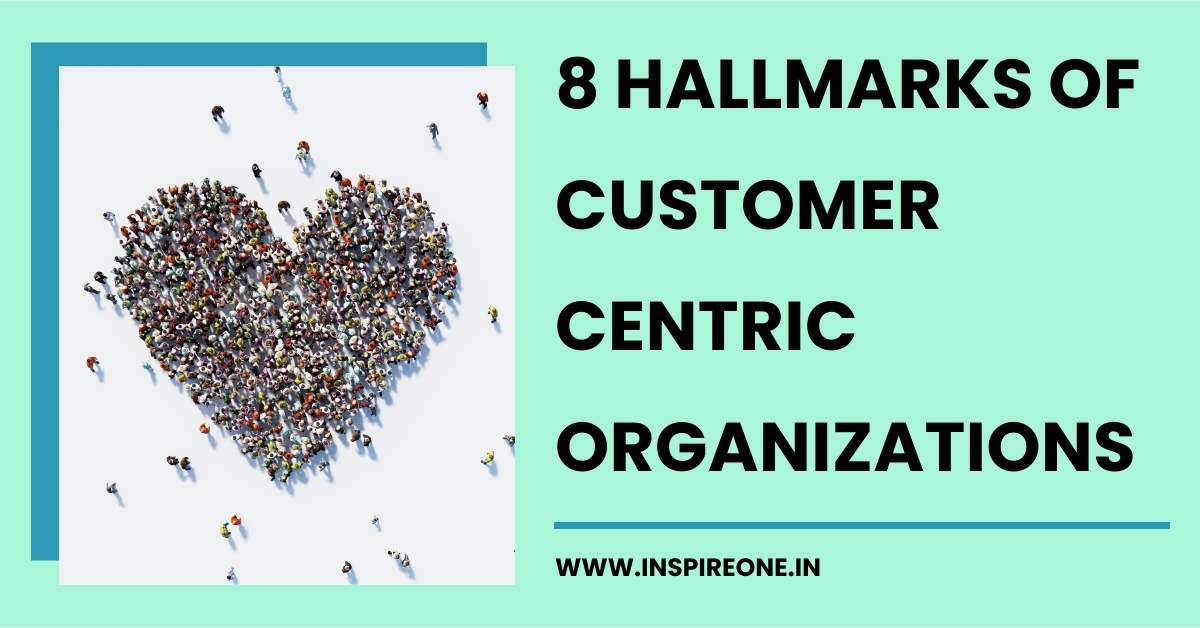An organization’s brand perception, worth and growth (or not) are driven by its customers. It is common to observe some organizations that have lost their way, simply by not keeping the customer front and center of what they do and how they take decisions.
Now, more than ever, organizations need a “lighthouse” to navigate the “during and after Covid 19” era. It would serve leaders well, to sharpen their sights on the customer, the discerning needs, and the uncertainty that the customers are grappling with too.
The good news?
The hallmarks of a customer centric organization are unshaken even in the turbulent times. Customers continue to ask for an “experience” where they feel valued, taken care of vs the experience of being taken for a ride and becoming faceless entities. The fundamentals have not been shaken.
We have had the opportunity to partner with some organizations in their missions of shaping customer centric cultures, which are agile enough to adapt to the changing customer and market scenarios.
Our experience helped us distill the 8 hallmarks of a customer centric organization.
Shared customer centric vision
The journey of customer centricity begins at the crafting of a brand aligned customer experience and promise. A customer experience and promise that then gets deeply deployed, owned, and embedded throughout the organization. A well-defined and brand aligned customer experience gives employees an aspirational guiding framework for decisions, actions and problem solving. Defining a shared customer centric vision also entails defining “how our customer experience will be unique” and therefore customer conversations go beyond generic words like satisfaction and delight. Unfortunately, not many organizations have defined their targeted brand experience and therefore the misdirected and misaligned actions (though with a positive intent).
Role model leadership
Leaders in customer centric organizations treat the rest of the organization as their customers. Their vision, decisions, reviews, and actions place customers in the front and center of everything that they do. These leaders are naturally oriented to “put the customer first” and show genuine curiosity to develop deep customer insights. Role model leadership also entails that the everyday corridor conversations / “signals” that the leadership sends motivates employees to focus on the customer.
Ongoing focus on changing customer needs
Customers expectations are constantly evolving, and true customer centricity requires a sharp ongoing focus changing customer needs. This requires real time listening posts for capturing the voice of the customer and very clearly defining and reviewing the “jobs our customers are hiring us to do”. However, to make this possible, it is critical that the organization is investing in right analytical tools to develop data-based insights. Having a formal data-based process of generating customer insights, sense making and taking corrective action is critical to shape a customer centric culture. Lack of a well-defined process in this area leads to reactive management action based on anecdotal data and personal opinions.
Internal customer orientation
“External service quality cannot exceed internal quality of service” ™, this is a well-known customer centricity tenet. For organizations to deliver an exceptional customer experience, they need to create a strong internal service mindset. Internal facing functions play a critical role in deciding eventual external customer experience!
Willingness to change
While an organization may have strong process to understand ongoing needs of the customers, it is equally critical to have an adaptable and an agile culture. Willingness to swiftly adapt to changing customer requirements is hallmark for any customer centric organization. This requires organizations to build and develop a learning mindset and trying new innovations / experiments rapidly.
Empowered employees
At the end of the day, customer experience is delivered by an organization’s employees. Sometimes this requires employees to go beyond the stated policies and take extra efforts to solve customer problems. While empowerment has to be taken by displaying ownership behavior, it is critical for organizations to create conditions that empower employees. Developing right level of empowerment frameworks, guardrails and recognition platforms is crucial in this endeavor.
Engaged employees
At InspireOne, we describe engagement as “carrying heart to work”. When employees carry their heart to work, they are intrinsically motivated to deliver exceptional customer experience. The mood and tone of management has a daily impact of mood/tone of employees and this further impacts their mood to support internal or external customers.
We culture
Lack of cross functional collaboration is perhaps the biggest barrier for organizations trying to deliver a strong customer experience. Most organizations have developed a “Us Vs They” culture where the focus becomes on pointing fingers when issues happen. One of the most sustainable ways of creating a customer centric organization is to develop a true “We Culture”. This is a culture where the entire organization operates as one well aligned team to support their customers.
Driving true customer centricity requires organizations and leadership to take specific actions around the 8 hallmarks. Customer centricity is not a destination but an ongoing journey which requires constantly assessing the organization of these 8 characteristics and taking relevant actions.







